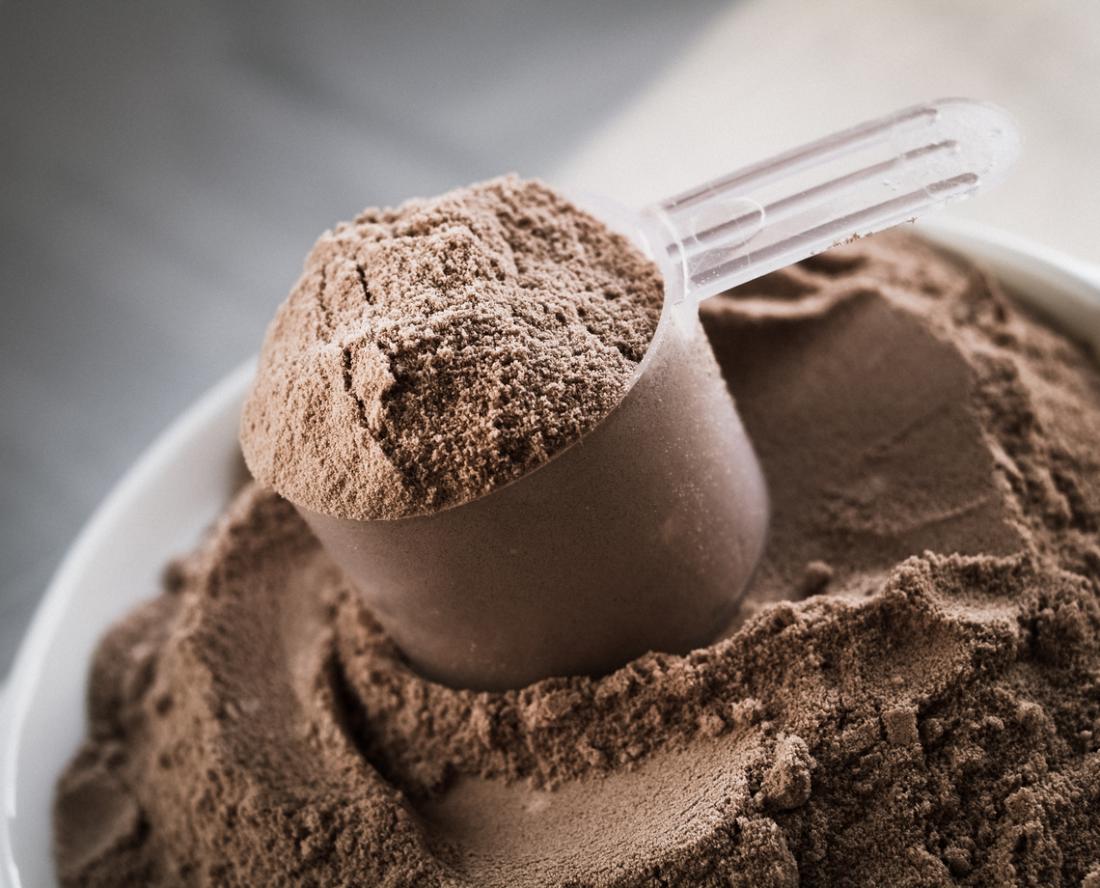
Sports and exercise supplements come in so many forms and varieties it can be difficult to sort through which ones are going to work best for you. If you are working toward building muscle, the question generally comes down to glutamine vs creatine as to which is the most effective in sports supplement.
Both creatine and glutamine are found in numerous protein powders and supplements. Yet many of us do not understand the differences between glutamine vs creatine. While both are known to do real work for building strength and lean muscle, which one is going to work best for your specific goals remains a difficult question.
Evaluating glutamine vs creatine involves an understanding of at least some of the science behind both of these things. What is glutamine, exactly? What is creatine? How does each of these things function in the body? How to take glutamine vs creatine? This guide will walk you through glutamine vs creatine to help you understand how to get the most out of your workout and get the results you are after.
What is Glutamine?
Glutamine is an amino acid and is one of the building blocks of proteins. In our bodies, proteins form muscles, transport essential substances in the blood, and help the immune system. As an amino acid, glutamine is essential to maintaining your health.
Many amino acids exist in two forms. Glutamine is one of these amino acids. It exists as L-glutamine and D-glutamine. Though these molecules look identical, the two forms of glutamine function differently because they have a different molecular arrangement.
The form that is found in foods and supplements is L-glutamine, although it is often listed as glutamate. L-glutamine is essential for building proteins. It is one of the most abundant amino acids in our bodies.
Yet, there are times when our bodies require more L-glutamine that we can produce which means we need to get it from our diet or another source such as a supplement. Injuries and illnesses can require more L-glutamine than we normally need. It is this biochemical function that has led to the development of glutamine as a sports supplement.
What is Creatine?
Creatine is made from arginine, glycine, and methionine. It is an amino acid derivative. It is produced naturally by the kidneys, liver, and pancreas. We can also get creatine from food sources like red meat. As a naturally occurring chemical in the body, it is largely stored in skeletal muscle tissue. Once it is stored in the biological cells it is transformed into phosphocreatine and saved for later use. Some of the creatine produced by our bodies and ingested through diet circulates as free creatine.
Creatine has become ubiquitous among athletes because supplementing with creatine contributes to muscle development. In fact, clinical studies have shown that taking creatine supplements produces measurable increases in both muscle mass and strength. These same studies showed that athletes taking creatine supplements outperformed a control group by as much as 43 percent. Creatine, it turns out, does improve strength and overall performance.
Glutamine vs Creatine differences
Glutamine and creatine are both organic compounds made by our bodies. Both are transported and stored in muscles. Creatine is synthesized in the liver and kidneys from amino acids. Whereas glutamine is one of the 20 amino acids that can be made by the human body.
One of the main differences is that creatine functions primarily toward metabolism and this works to help build muscle. Glutamine, on the other hand, is part of the system of compounds that goes into muscle protein synthesis.
We usually get all the creatine we need from the normal metabolic functions in our bodies, some people, such as people recovering from illness, injury, and surgery, may require creatine supplements. However, creatine supplements are an ideal addition to workout supplements since it does support building muscle.
Glutamine is often referred to as a conditionally essential amino acid. This means it is necessary to get the building blocks of glutamine from some kind of dietary source. Glutamine is preferred by some athletes since it is directly involved in muscle protein synthesis. Others rely on creatine since it supports the metabolic processes that lead to muscle protein synthesis.
Glutamine will build muscle. Creatine will support the work necessary to build muscle. Herein is the primary difference between the two.
When to take Glutamine
Since glutamine increases the production of natural HGH or human growth hormone, it is best to take glutamine post-workout. By boosting levels of HGH at the post-workout phase you are sure to increase the synthesis of muscle tissue. This also cuts down on body fat and increases metabolic activity.
Another advantage of taking glutamine after your workout is that it tends to suppress insulin levels. This is great for people who struggle with blood sugar issues and diabetes. But this also results in increased muscle and decreased fat.
When to take Creatine
The conventional wisdom on creatine is to take it before you work out. Creatine will accomplish two things pre-workout: it increases stores of glycogen, and this sustains energy levels for high-intensity training. It also helps with muscle recovery once you are finished working out.
This said, the research on creatine seems to suggest you can take before or after a workout, but you should make sure to take it just before or just after. The closer to your workout, the better. Studies show that people who took creatine close to their workout tended to build more muscle than people who took creatine hours after a workout.
Benefits of Glutamine
The main benefit most people get from taking glutamine is muscle gain. Glutamine is an essential building block of muscle tissue. Assembling the necessary amino acids in the body before working out ensures that you maximize the benefits of your workout. In a study that tracked the impact of glutamine supplements on people who did high-intensity muscle training, researchers found the people who took glutamine supplements increased muscle six times more than those who did not take supplements.
Glutamine has also been clinically shown to reduce muscle fatigue and muscle soreness from intense workouts. One study, in particular, showed that taking glutamine supplements reduced muscle fatigue and soreness by two hours over people who took no glutamine.
Other benefits of glutamine include:
Immune System
Given that glutamine is already prescribed for medical purposes, it is easy to see that it has tremendous benefits for the immune system. Glutamine is a crucial fuel for immune cells like white blood cells that play a critical role in the immune system.
The immune system can get depleted especially during times of illness or injury. Burns are especially taxing to the immune system. This means that the body’s need for glutamine will outpace its ability to produce it. Your body may begin to break down muscle tissue to access more glutamine. This is when a glutamine supplement can become necessary.
In these situations, glutamine supplements may be prescribed to boost the immune system. Glutamine supplements taken during situations of critical illness and trauma have been shown to decrease infections and reduce hospital stays.
Other research has shown that glutamine supplements can help fight bacterial and viral infections.
Intestinal Health
The immune system benefits of glutamine are related to its role in intestinal health. The intestines are considered the largest part of the body’s immune system. Many of the cells that line the intestinal system are part of the immune system. Glutamine is a crucial source of food for this intestinal/ immune system.
The cells that line the intestinal system prevent bacteria from passing into the body and causing serious infections. It also acts as a wall against toxins passing into the body. To maintain this system, your body requires a steady flow of glutamine as a source of fuel.
Glutamine ensures that the intestinal system remains healthy, and this also supports the immune system.
Benefits of Creatine
Creatine is one of the most studied exercise supplements around. The benefits of creatine are not just anecdotal; they are scientifically verified. And there is a considerable list of benefits to recommend creatine as a workout supplement.
Cells produce more energy
Creatine increases the amount of phosphocreatine in your cells. Stored cellular phosphocreatine stimulates the energy process at the cellular level. It helps produce the chemical ATP which is the chemical broken down during exercise to produce energy. ATP is the basic power source in our cells. Creatine builds and stimulates the energy at the most basic level.
Creatine helps build muscle mass
Creatine opens the cellular pathways that produce new muscle growth. It also assists in the formation of complex proteins that become muscle tissue.
Improves high-intensity performance during training
Creatine has been scientifically shown to improve endurance and stamina. The effects of creatine that increase endurance are tied to an increase in strength, resistance to fatigue, increased muscle mass, faster recovery, and even improved brain performance.
Speeds muscle growth
Creatine has been shown to accelerate muscle growth. Athletes know this, but there is scientific evidence to back it up. Studies have documented increased muscle growth from creatine supplements, seeing significant increases in as few as 5 days.
Creatine may lower blood sugar levels and fight diabetes
Studies have shown that taking creatine supplements lowers your blood sugar levels when combined with high-intensity exercise. Creatine, it seems, can fight short-term blood sugar spikes and this lowers blood sugar over the long term.
It helps the brain function
As creatine enhances the production of the energy-producing molecule ATP at the cellular level, it provides the same boost to your brain as it does for muscle tissue. Creatine has been shown to improve brain function. It can help combat Alzheimer’s disease and Parkinson’s disease. Creatine could also protect against stroke and epilepsy.
Glutamine and Creatine supplements
Numerous supplements provide you with both glutamine and creatine. Most of these are reputable and the science behind both glutamine and creatine is solid. There are not many risks other than making certain you are buying from a sound provider.
Glutamine and creatine have been thoroughly tested and are safe when taken within the specifications given by the supplements.
Blog Reference:- https://nfsports.com/blogs/supplements/glutamine-vs-creatine


